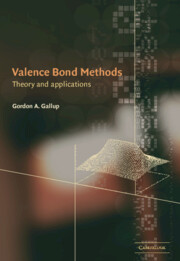Preface
Published online by Cambridge University Press: 13 August 2009
Summary
One senses that it is out of style these days to write a book in the sciences all on one's own. Most works coming out today are edited compilations of others' articles collected into chapter-like organization. Perhaps one reason for this is the sheer size of the scientific literature, and the resulting feelings of incompetence engendered, although less honorable reasons are conceivable. Nevertheless, I have attempted this task and submit this book on various aspects of what is called ab initio valence bond theory. In it I hope to have made a presentation that is useful for bringing the beginner along as well as presenting material of interest to one who is already a specialist. I have taught quantum mechanics to many students in my career and have come to the conclusion that the beginner frequently confuses the intricacies of mathematical arguments with subtlety. In this book I have not attempted to shy away from intricate presentations, but have worked at removing, insofar as possible, the more subtle ones. One of the ways of doing this is to give good descriptions of simple problems that can show the motivations we have for proceeding as we do with more demanding problems.
This is a book on one sort of model or trial wave function that can be used for molecular calculations of chemical or physical interest. It is in no way a book on the foundations of quantum mechanics – there are many that can be recommended. For the beginner one can still do little better than the books by Pauling and Wilson[1] and Eyring, Walter, and Kimbal[2].
- Type
- Chapter
- Information
- Valence Bond MethodsTheory and Applications, pp. xiii - xivPublisher: Cambridge University PressPrint publication year: 2002

